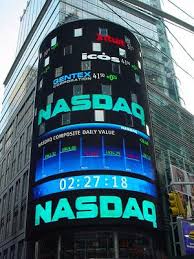Week in Review
The pivotal event of last week was undoubtedly the posting of the eagerly awaited US non-Farm Payroll (NFP) figure which occurred last Friday. This highly important indicator disclosed that US employers created just 113,000 new jobs during January which was well beneath the 185,000 number predicted by a consensus of prominent economists. The US Department of Labor also issued its latest unemployment rate which registered its lowest value in over five years by dropping to 6.6%.
Investors were initially surprised by the poor NFP since it followed in the footsteps of a major job pullback in December. However, they subsequently assessed that this disappointing outcome was mainly caused by North America suffering one of its most bitterly cold winters in recent times. Nevertheless, can such an alarming sequence of poor US labor reports be written off so easily? Analysts explained that they can by identifying encouraging facts such as the ratio of work-eligible US citizens increasing to 58.8% during last month by hitting its highest level since the autumn of 2012.
Stock prices plummeted shortly after the NFP was released before subsequently rising sharply as the session progressed. Market consultants explained this behavior by stating that investors did not penalize the weak number, as would normally be expected, because they did not assess that it was generated by any serious fundamental factor. Consequently, the financial markets continued to rally for the second consecutive day by paring the sufficient losses they experienced during the earlier part of last week. Analysts further advised that the encouraging bullish behavior experienced last Fridays was a positive sign that the recent massive sell-off could now be bottoming out. Although the NFP certainly placed a question market about the true health of the US economic recovery, it still presented sufficient attributes to suggest that growth was still alive and kicking.
What to Expect This Week
There are a number of major events scheduled to occur this coming week, which could be market movers. The most prominent ones are as follows:
On Monday, Japan will post its Consumer Confidence Index. This figure is expected to reveal the full extent of deterioration in the popularity of the Japanese Prime Minister, Shinzo Abe. Although he has been extremely active since he took office about one year ago, Shinzo has attracted significant criticism lately after he introduced a controversial sales tax.
On Tuesday, the new Chair of the US Federal Reserve, Janet Yellen, will present her first testimony before the House Financial Services Committee. This event has the potential to initiate high levels of volatility as she is expected to explain why the NFP posted last Friday was such a disappointment. For instance, was this worrisome performance caused by recent Fed stimulus trimming or otherwise?
Wednesday will see the release of the very important Chinese Trade Balance. This event has acquired greater relevance of late ever since China posted weak service and manufacturing PMIs indicating that these key sectors have entered new recessions. Should the Trade Balance also reflect such deterioration in the world’s second largest economy, then countries, such as Australia, could feel the blunt.
Later the same day, the Bank of England (BoE) will post its Quarterly inflation report which will be followed by a speech presented by Mark Carney, BoE Governor. With inflation relatively under control, Carney is not expected to make any rash statements especially against such a worrisome backdrop of global uncertainty.
Finally, the President of the European Central Bank, Mario Draghi, is also scheduled to deliver a speech on Wednesday. Analysts are hoping the he will reveal more insights into the plans of the ECB to counter the increasing problem of deflation plaguing the currency bloc at present.
The USA will issue its key Retail Sales figure this coming Thursday. This indicator is very important because it is a vital measure of consumer confidence. The expected result of 0.3% must now in doubt amid the release of the weak NFP report published last Friday and the ravages of a bitterly cold USA winter.
The initial reading of the German Gross Domestic Product will be presented on Friday when the economic powerhouse of the Eurozone will publish its first take of this indictor for the last quarter of 2013. As growth in the currency bloc has already been predicted to be slower during 2014, a disappointing German result could prompt the ECB to instigate new stimulus measures faster than already advised.




